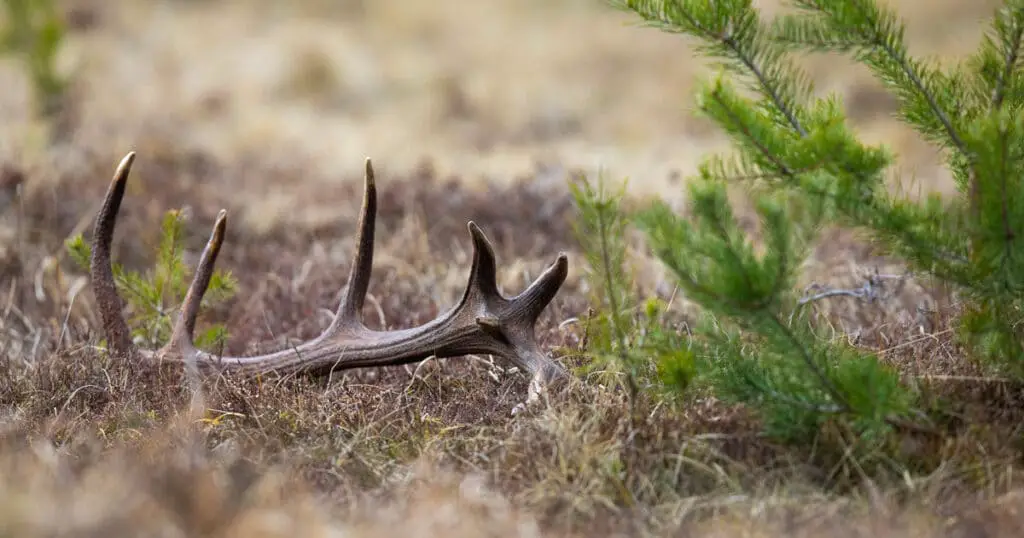Deer antlers are an impressive hunting trophy that commemorates a successful trip. They can also be used in decorating your cabin or even transformed into tools. But did you know antlers can be found in more places than just on a deer’s head? Deer shed their antlers annually, and that means they leave beautiful antlers all over the forest. You just need to know where to look! That’s what we’ll discuss here.
Hillsides, grassy areas, and isolated spots in the forest are the best places to find deer antlers. Bucks shed their antlers after the mating season each year. This often takes place in early winter, so understanding how deer move seasonally, whether or not they migrate, and where to find their bedding areas can help you identify areas where you are most likely to find deer antlers in the woods.
Where Is The Best Place to Find Deer Antlers?
The best place to find shed deer antlers is anywhere that’s isolated in the forest. These areas include:
- Grassy buffer strips
- Isolated evergreen areas
- Hillsides that are facing south
Winter is the prime time when deer eat and bed. Bedding refers to making a safe area where the deer and any fawns can sleep, away from predators.
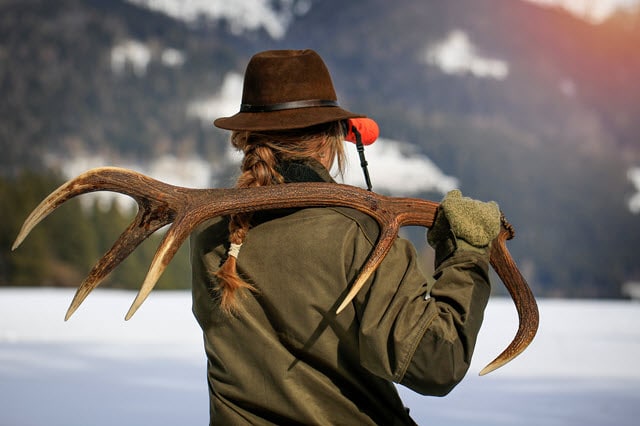
Deer commonly make their beds in grassy areas, since grass is a soft and warm material perfect for bedding. Tall grass is also a great way to hide from predators, making the beds safe.
You’re likely to find shed antlers in grassy areas that deer use as bedding spots.
Evergreen Forests
Evergreen areas refer to areas of the forest where evergreen trees are located. They usually only appear in northern forests, and they’re great places to find shed antlers.
Evergreen areas are favorite spots for deer in the winter, since their thick pine needles block wind and snow. They will make their bed underneath the evergreen trees, staying there until the weather gets warmer.
This makes isolated evergreen areas great places to scope out shed antlers. They usually attract mature bucks the most, so you can score an impressive set of antlers from these locations.
South Facing Hillsides
South-facing hillsides are the last main spot where you can find shed antlers.
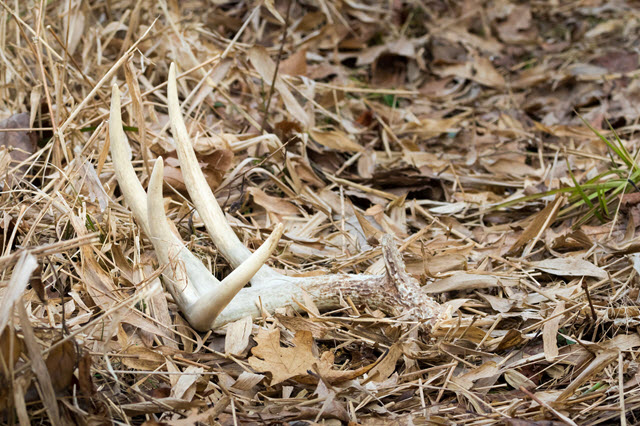
The south side should be searched specifically because it’s the side that gets the most sunlight within a 24-hour period, making it warmer than all the other sides.
Deer come to these hillsides to get some warmth during the cold months, and sometimes leave their antlers behind.
These hillsides typically attract mature bucks, but they can also attract does and their fawns if the area is particularly ideal. A hillside with tall grass and evergreen trees is pretty much a guaranteed spot to find shed antlers.
When Is The Best Time to Look For Deer Sheds?
There are a few factors that impact when bucks will shed their antlers each year:
- Environmental conditions
- Deer age
- Where the deer live
The winter months are the most common time for deer antler shedding. After fully grown bucks have grown their antlers for a year, they usually start getting a little too heavy for the deer’s head.
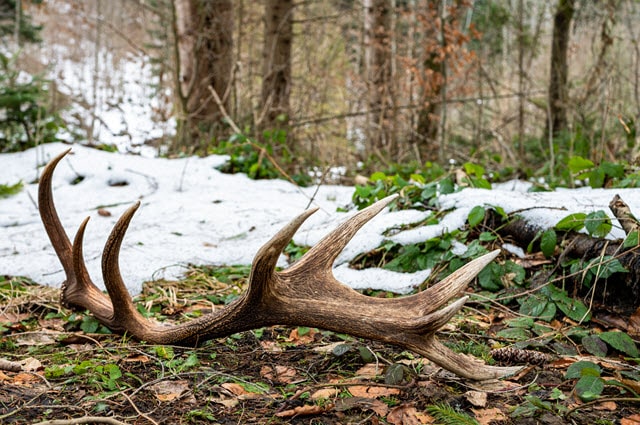
As a result, they will shed their antlers during the winter. Winter is ideal because certain natural predators of deer are hibernating (deer do not hibernate) and won’t be a threat the bucks need to fight off.
Best Months to Go Shed Hunting
February, March, and April are the best times of year to look for deer sheds.
Most deer will have already shed their antlers during early January, so that’s an especially good time to look for shed antlers. But most deer will also still be inhabiting their winter beds.
If that’s the case, you won’t be able to grab the shed antlers without startling the deer.
Also, the snow likely hasn’t fully melted yet, which makes it more difficult for you to spot deer antlers.
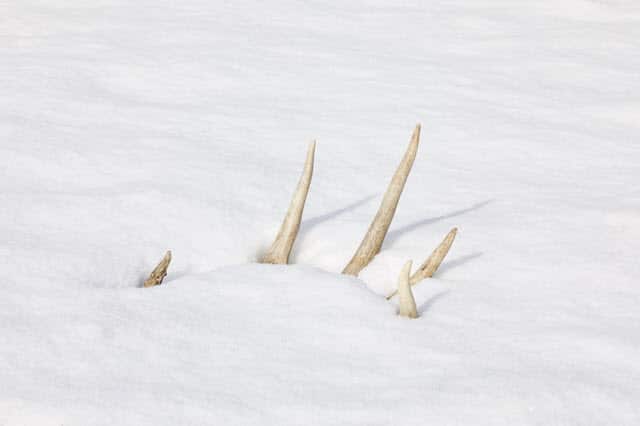
February and March are when most bucks will have already dropped their antlers and abandoned their winter beds.
The snow will also be more melted by then, making it easier for you to find shed antlers. April is the prime time for hunting for antler sheds, as the snow will be mostly if not completely melted.
Don’t Wait Too Long
The hunt won’t be as successful if you wait until too late to try hunting for deer antlers. Other shed hunters will have picked up all the best antlers, leaving slim pickings.
Forest rodents, such as mice and squirrels, also like to gnaw on any antlers they find, all the way to the nub. Spring vegetation growth can also make it more difficult to find good shed antlers.
Tips For Antler Hunting
Some of the best tips for antler hunting include:
- Walking slowly with your eyes on the ground
- Looking where deer food sources are
- Scouting areas with low hunting pressure
The key to a successful antler shed hunt is taking your time and staying focused.
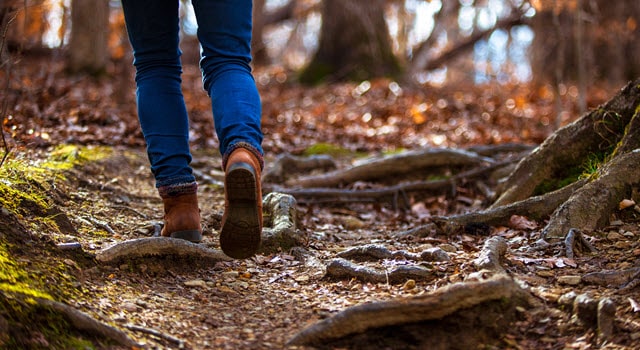
Antlers can blend in with sticks or corn stalks that are already on the ground. Scan slowly and take your time processing images.
You also want to make sure you’re looking completely at the ground. Novice antler hunters often look too high or too far forward. Shed deer antlers are hard to spot from a distance, no matter how large they are.
Look For Areas with Plentiful Food
Finding feeding spots is a great way to figure out where most deer congregate. An area with deer food will probably have plenty of antlers.
An area of the forest with more berries will be more likely to attract deer than other spots. The more time deer spend in the area, the more likely they are to leave antlers in that spot.
Areas with low hunting pressure are areas of the forest where deer aren’t hunted as much. High hunting areas leave few deer able to shed their antlers, since they are shot and harvested.
An area where deer aren’t hunted as much is more likely to have deer antler sheds, since the male deer are alive to shed their antlers.
How To Discern Antler Quality
Once you find the antlers, you’ll want to discern if they are high quality or not. Antler size and condition are important factors to analyze when determining antler quality.
Size is the most important factor in determining how high quality a shed antler is. The larger they are, the more high quality they are.
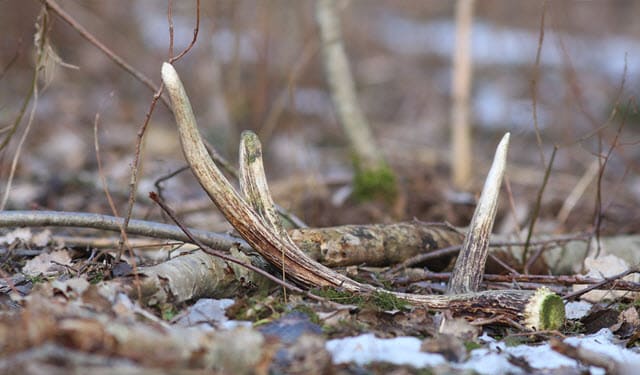
Larger antlers go for more on the hunting market than smaller antlers, so measuring them is the first thing you should do.
Antler condition is the next factor to consider. If the antlers are mostly white and hard to the touch, the antlers are likely from a younger buck.
However, fuzzy brown antlers go for more on the hunting market since they are harder to find. These types of antlers are from extremely young bucks, and they don’t shed as often, making them a valuable prize.
Final Thoughts On Where to Find Antlers In the Woods
Finding deer antlers that have already been shed is a much easier method of getting antlers than hunting.
However, you’ve got to look for antler sheds at the right time and in the right places to score some valuable prizes.
Follow the steps we went over here and you’ll be able to find high-quality antlers that will make a handsome prize in any collection.

